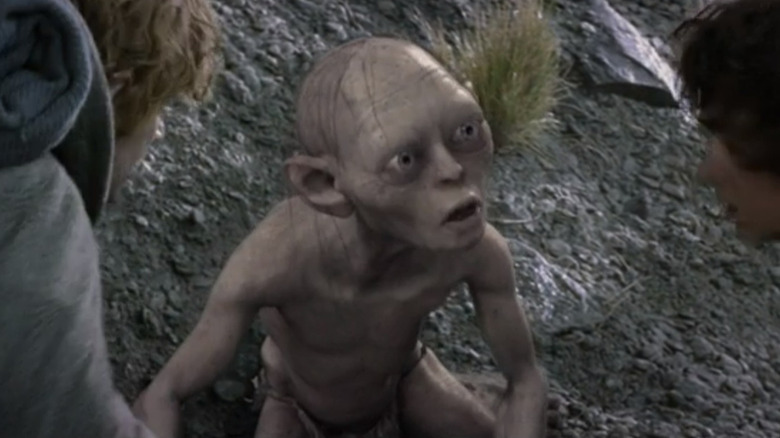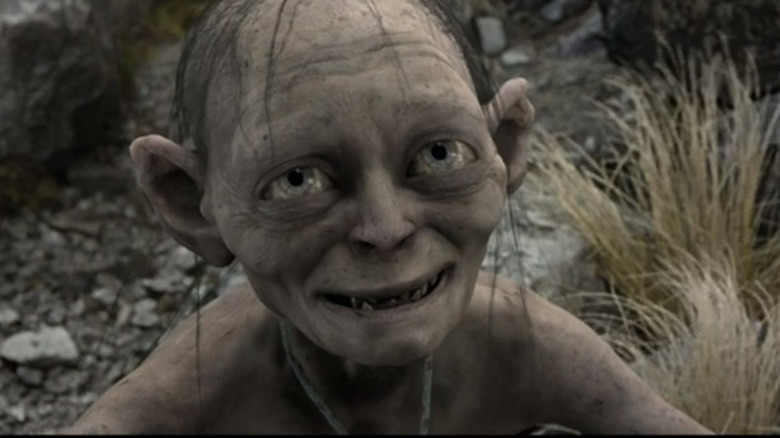How The Lord Of The Rings VFX Team Realized Andy Serkis Was Their Most Valuable Resource [Exclusive]
Believe it or not, James Cameron's wallet has yet to create real aliens. He kitbashed his own fleet of mechanical sea beasts, but that's not quite the same thing. No, tragically, "Avatar: The Way of Water" is just a bunch of human beings in silly suits pretending to be giant blue space people. Once you get over the initial disappointment that Na'vi don't exist ( ... yet), though, you begin to appreciate just how incredible the technology behind "The Way of Water" is.
James Cameron's VFX team manages to catch every subtle gesture and every micro-expression provided by the actors as they bring Pandora to life. In 2022 (which is somehow almost over, already?), motion capture performances are commonplace. It's still technically impressive but the novel veneer has dulled, so it's hard to believe that the entire medium really only kicked off about two decades ago.
And, in case it hasn't been mentioned in a bit, the entire art form pretty much owes its popularity to a singular man and a singular role — Andy Serkis as Gollum in Peter Jackson's "The Lord of the Rings" trilogy. That's not just hyperbole, either. "The Way of Water" features VFX artists who also worked on "The Lord of the Rings" and they still attribute the foundation of their work to Serkis. Here's the story.
Motion capture always comes back to Andy Serkis
In an exclusive interview with our very own Bill Bria, "Avatar: The Way of Water" VFX supervisors Joe Letteri and Ritchie Baneham spoke about the surprisingly critical role that their work on Peter Jackson's "The Lord of the Rings" trilogy played in fleshing out the visual language of James Cameron's latest blockbuster. Letteri and Baneham told Bria that:
Letteri: When you're doing an animated character, animators will often refer to themselves, because it's the closest reference they have. And when we started doing Gollum, it's like — every animator traditionally has a mirror at their desk. And every shot that we looked at for review, you could see who the animator was ... and at some point we had to say, "Stop. We have Andy [Serkis]. Why don't we just use him?"
Baneham: I can even define the moment, which is the soliloquy sequence where Andy is playing two characters ... I'm like, "I don't want any of Mike. I don't want any of Atsushi. Get Andy." And we were able to [pull it off] ... I do think that's a building block for all the way to today, which is value the performances the actors give you, and protect them. It's [the animator's] job to shepherd them to screen.
It's been just over two decades since the "The Lord of the Rings: The Fellowship of the Ring" first introduced the world to Andy Serkis' motion capture performance as the cave-dwelling, emaciated monster, Gollum. Since then, both Serkis and the medium of motion capture acting have become Hollywood mainstays. In a very real sense, Serkis' performance paved the way for James Cameron's "Avatar" movies to be the technological titans that they unquestionably are.

